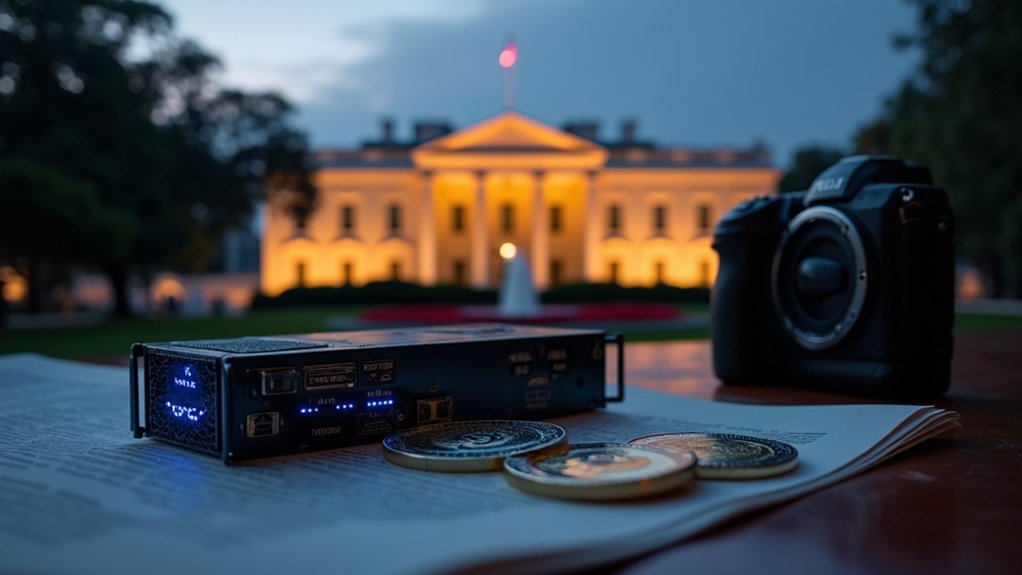While most Americans struggle to decipher the labyrinthine tax implications of buying coffee with Bitcoin, President Trump’s administration has disclosed a surprisingly pragmatic approach to cryptocurrency taxation that could transform how small-scale digital asset transactions are treated.
The centerpiece of this initiative revolves around a proposed $300 de minimis threshold for cryptocurrency transactions—a figure that would exempt smaller trades from the Byzantine calculations currently plaguing crypto enthusiasts who dutifully track every satoshi spent on mundane purchases. This threshold, championed by Senator Cynthia Lummis through standalone legislation, addresses the peculiar reality that purchasing a sandwich with digital currency currently requires the same tax documentation as selling a rental property.
The absurdity of tracking every digital penny spent on coffee could finally end with sensible regulatory relief.
Trump’s broader crypto strategy extends beyond mere transactional relief, encompassing executive actions designed to foster domestic digital asset innovation through his characteristically branded “America First” policies. The administration’s deregulation efforts signal a marked departure from previous approaches, with plans to establish extensive regulatory frameworks that could finally provide the clarity this industry desperately needs (assuming federal agencies can coordinate their efforts without their usual bureaucratic choreography). Eric Trump’s proposal for 0% capital gains tax on US-based cryptocurrencies represents perhaps the most ambitious component of this comprehensive tax reform strategy.
The economic implications extend into retirement planning, where a potential executive order might permit cryptocurrencies in 401(k) plans—a development that would have seemed fantastical just years ago when Bitcoin was dismissed as internet monopoly money. Such integration reflects the administration’s recognition that digital assets have evolved beyond speculative instruments into legitimate investment vehicles deserving regulatory accommodation. The administration’s approach emphasizes fair banking access for the crypto industry, addressing longstanding concerns about financial institutions’ reluctance to serve digital asset companies.
Perhaps most intriguingly, the administration plans to launch “Made in America” themed ETFs featuring domestically-based digital assets, suggesting a nationalist approach to cryptocurrency that prioritizes homegrown blockchain development over foreign alternatives. This strategy addresses genuine concerns about maintaining competitive advantage in the global crypto market while supporting local innovation. Investors should understand that cryptocurrency markets experience four-phase cycles including accumulation, growth, bubble, and crash periods that typically span several years.
The legislative obstacles facing these proposals remain substantial, particularly regarding integration into broader budget legislation. However, the administration’s stakeholder engagement approach—involving multiple federal agencies and industry participants—suggests a more collaborative methodology than typically associated with revolutionary policy shifts.
Whether these initiatives can navigate Congressional complexities while maintaining their transformative potential remains the ultimate test of Trump’s crypto ambitions.







